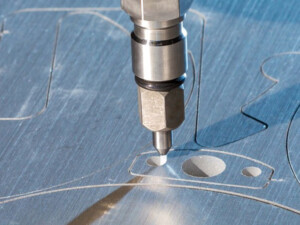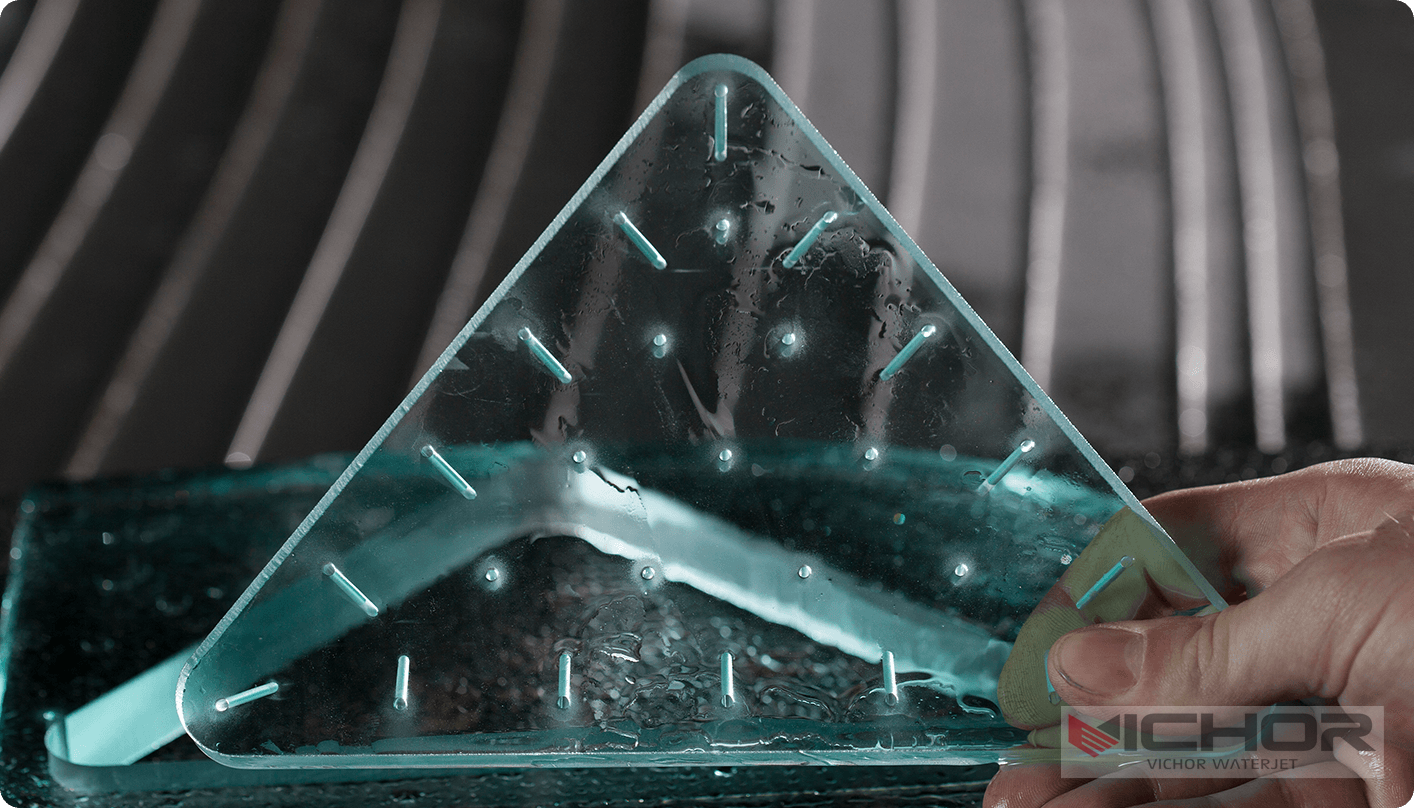
The Ultimate Guide to Waterjet Tube Cutting: Precision, Applications, and Benefits
In the world of modern manufacturing and fabrication, precision is paramount. When it comes to cutting complex shapes and profiles from tube and pipe stock, few technologies offer the versatility and capability of waterjet cutting. Waterjet tube cutting is a advanced process that utilizes a high-pressure stream of water, often mixed with an abrasive substance, to slice through a vast array of tubular materials with exceptional accuracy and quality. This technology has revolutionized how industries handle tubular components, moving beyond the limitations of traditional cutting methods. Whether you’re working with stainless steel, aluminum, copper, or even composite tubes, understanding the power of waterjet tube cutting is essential for optimizing your production process. This definitive guide will explore this technology in depth, covering its core principles, undeniable advantages, diverse applications, and key considerations for implementation.
What is Waterjet Tube Cutting? Understanding the Technology
At its core, waterjet tube cutting is a cold cutting process. It works by pressurizing ordinary water to extreme levels—typically between 60,000 and 90,000 PSI (4,000 to 6,200 bar)—and forcing it through a small, precision gemstone nozzle (often made from sapphire or diamond) to create a supersonic stream. For cutting harder materials like metals and ceramics, a granular abrasive (usually garnet) is introduced into this stream, effectively transforming the water into a potent erosion tool.
When applied to tubes, this requires specialized machinery. Standard flat-bed waterjets are adapted with advanced rotary attachments, often called 4-axis or 5-axis cutting heads. The tube is securely mounted in a chuck or between centers, and this rotary axis allows the tube to rotate perfectly under the waterjet stream. Simultaneously, the cutting head moves along the length of the tube (the X-axis), can move vertically to accommodate different tube diameters (the Z-axis), and can often tilt (the A-axis) to create complex miters and bevels. This synchronized movement between the cutting head and the tube’s rotation enables the machine to perform intricate cuts on the outside diameter (OD), inside diameter (ID), and along the length of the tube with incredible precision. This multi-axis capability is what sets modern waterjet tube cutting systems apart, allowing for the creation of components that would be incredibly difficult or impossible to produce with other methods.
The Unmatched Advantages of Using Waterjet for Tube Cutting
The growing adoption of waterjet tube cutting across countless industries is no accident. It offers a unique set of benefits that address the shortcomings of laser, plasma, and saw cutting.
No Heat-Affected Zone (HAZ): This is arguably the most significant advantage. Unlike thermal cutting processes, a waterjet does not generate heat. This means the structural and metallurgical properties of the material remain completely unchanged. There is no hardening, warping, melting, or residual stress induced by heat, which is critical for maintaining the integrity and performance of the final tubular component.
Exceptional Versatility and Material Compatibility: A single waterjet tube cutting system can process an enormous range of materials. One day it can be cutting stainless steel tubing for a medical device, and the next it can be slicing through delicate copper-nickel alloy pipes for marine applications or even carbon fiber composite tubes for aerospace. There is no need for changeover of gases or different energy sources; you simply adjust the pressure, abrasive feed rate, and cutting speed. This makes it an ideal solution for job shops and facilities that work with diverse materials.
High Precision and Complex Geometries: The technology is capable of holding extremely tight tolerances, often within ±0.005 inches (±0.13 mm). The combination of CNC precision and multi-axis movement allows for the creation of highly complex features directly on the tube. This includes not just straight cuts and holes, but also slots, tabs, notches, and intricate profiling for connectors and joints. The ability to cut ready-to-weld bevels in a single setup further enhances its value.
Environmentally Friendly and Safe: The waterjet tube cutting process is considered a “green” technology. It does not produce hazardous fumes, vapors, or toxic gases as no combustion or vaporization occurs. The primary waste products are spent abrasive and water slurry, which are non-hazardous and can often be separated and recycled. Furthermore, the absence of extreme heat reduces the risk of fire, making it a safer option in many environments.
Minimal Secondary Processing: The edge quality produced by a waterjet is typically very clean and requires little to no finishing. The cut is smooth and, because it is a cold process, there is no slag or dross to remove, which is common with plasma cutting. This reduces labor time and cost, moving parts directly to assembly or welding.
Key Applications and Industries Served by Waterjet Tube Cutting
The unique capabilities of waterjet tube cutting make it indispensable in a wide array of sectors where precision, integrity, and complexity are non-negotiable.
Aerospace and Aviation: This industry relies on high-strength, lightweight tubular structures for frames, hydraulic lines, and engine components. Waterjet tube cutting is used to create precise, weight-saving cutouts and complex end profiles on titanium, aluminum, and high-grade steel alloys without compromising their fatigue life and strength through heat damage.
Architecture and Construction: From intricate handrails and artistic sculptures to structural frameworks for buildings and stadiums, architects and builders use this technology to fabricate complex nodal joints and custom fittings. The ability to cut perfect miters on large-diameter stainless steel or aluminum tubes is a huge advantage.
Automotive and Motorsports: High-performance vehicles, both on the consumer market and the race track, utilize numerous custom tubular components. Roll cages, exhaust systems, suspension arms, and fluid lines are all perfect candidates for waterjet tube cutting. The process ensures every cut is perfect, contributing to the safety and performance of the vehicle.
Industrial Machinery and Fabrication: Heavy machinery often uses large-scale hydraulic cylinders and structural tubing. Waterjet tube cutting allows manufacturers to create precise ports, holes, and mounting features directly onto these tubes, simplifying assembly and improving the reliability of the final machine.
Marine and Offshore: The corrosive marine environment demands materials like copper-nickel, duplex stainless steels, and aluminum. Waterjet tube cutting handles these materials expertly, creating components for railings, propulsion systems, and complex pipework for offshore oil rigs, all without inducing stress corrosion cracking.
Design Considerations for Optimal Waterjet Tube Cutting
To fully leverage the power of this technology, certain design and process factors should be considered.
Taper Management: A inherent characteristic of the abrasive waterjet process is that the jet stream is slightly wider at the top of the material than at the bottom, creating a minimal taper. Modern advanced waterjet tube cutting systems use sophisticated software and dynamic head control to automatically compensate for this, tilting the head to produce near-perfectly square edges. Discussing taper with your service provider is key for parts with critical dimensional requirements.
Kerf Width: The “kerf” is the width of material removed by the cutting stream. It is not a infinitely thin line, typically ranging from 0.030 to 0.050 inches (0.76 to 1.27 mm) depending on the orifice size and abrasive rate. This must be accounted for in CAD designs, especially for very precise interlocking parts.
Cutting Speed vs. Quality: There is a direct relationship between the speed of the cut and the resulting edge finish. A slower cut will produce a smoother finish, while a faster cut might leave a slightly rougher texture but increase throughput. The optimal speed is determined by the material type, thickness, and the final application’s quality requirements.
Nesting and Material Utilization: For high-volume production runs of small tubular components, efficient nesting of parts along the length of a long tube stock is crucial for minimizing waste. Advanced CAM software for waterjet tube cutting includes features to optimize this nesting, maximizing material yield and reducing cost per part.
Choosing a Waterjet Tube Cutting Service
If investing in a machine is not feasible, partnering with a specialized service provider is an excellent option. When selecting a vendor for your waterjet tube cutting projects, look for:
Advanced Machinery: Ensure they have true multi-axis (4-axis or 5-axis) waterjet systems with precision rotary chucks, not just a standard 3-axis machine with a simple roller.
Engineering Expertise: The best partners have experienced programmers and engineers who can consult on design for manufacturability, suggesting tweaks to optimize your part for the process.
Quality Assurance: They should have robust quality control measures, including first-article inspection and CMM (Coordinate Measuring Machine) capabilities to verify complex geometries.
Material Handling: Check if they can handle the specific material grades, diameters, and lengths your project requires.
Waterjet tube cutting stands as a testament to innovation in manufacturing, offering a blend of cold-cutting safety, phenomenal versatility, and uncompromising precision. It eliminates the detrimental effects of heat, works with virtually any material, and produces ready-to-use components with complex geometries that defy traditional methods. As industries continue to push the boundaries of design and demand higher quality, the role of waterjet tube cutting will only become more central. Whether you are designing the next generation of aerospace components, custom automotive frames, or architectural masterpieces, understanding and utilizing this powerful technology is key to turning innovative designs into tangible, high-integrity reality.
continue reading
Related Posts
- 1461 words7.4 min read



